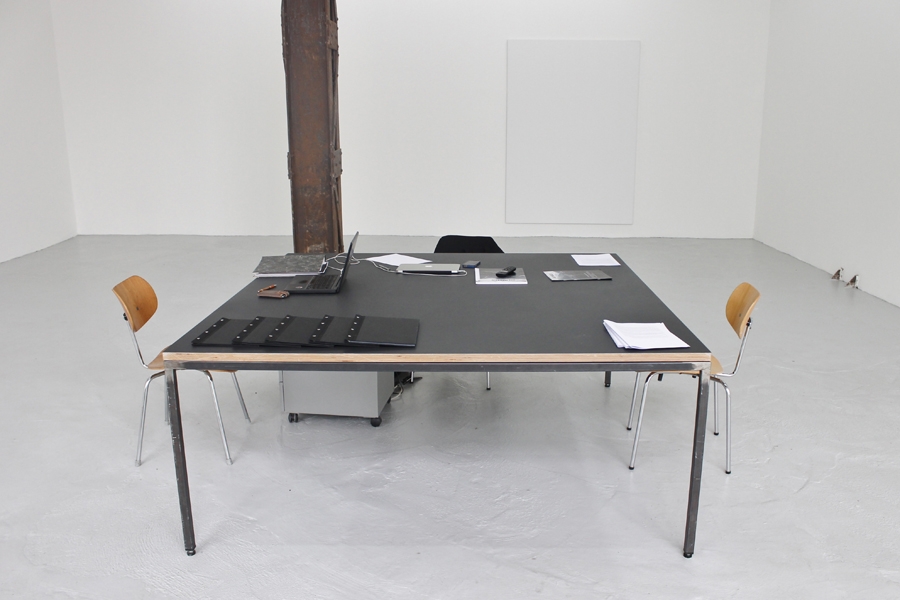Showing performance art in galleries is often a problem, and one usually solved by the artist performing at the opening and presenting video documentation as the exhibition. The young Danish artist Christian Falsnaes doesn’t take this easy way out. In his solo exhibition at PSM Gallery, he attempts to assert the works displayed in the gallery as ‘performance works’ and thereby resolve the supposed contradiction between action and object. For example, a white primed canvas hangs on the wall: one searches in vain for any artistic composition. What it turns out to state, bluntly, is that in a gallery one must pay money in order to get art: if someone buys the white canvas (Many, 2014), they don’t just get the empty canvas but also a certificate. The latter precisely describes how, after purchase, the buyer can create a painting, drawing and photo on canvas together with the artist and according to a script in the gallery space.
Collecting appears here not as passive consumption but, rather, as an active process that makes the moment of performing the ‘open work’ – as Umberto Eco famously called it – tangible for the recipient. At the same time, Falsnaes poses a question in this work – one that he frequently acts out in his other performances – about the relationship between artist and audience. Since the artist tells the collector how to paint the canvas, he plays the ‘boss’, presenting himself as authoritative and undemocratic. To what extent does the audience follow these roles? When does one refuse the collaboration? It is these questions that each collector must answer for him- or herself in the exhibition.
Another example of these performative art objects are small white framed sheets of paper painted with blue lines. Upon purchasing one of these tentative images, from the series Time / Line / Movement (2014–), the collector commits to painting the image on a second paper sheet of the same size, and is given a time limit for doing so. Again the new owner of the work becomes artistically active, and again he follows the artist’s instructions. In addition he promises – as it is stipulated on the certificate for this work – to burn the original (the already painted image he bought) after copying it. A photograph then documents this process. In this ‘performance work’, Falsnaes decidedly calls into question the mechanisms of creation of value through art, which generally happens in the art market by purchasing and collecting expensive originals.
In a second, smaller space of the gallery is a computer monitor on which performances by Falsnaes are on display. However, again the artist cleverly refuses mere documentation. Rather, the performances are dissected: 32 distinct situations, characterised by specific actions, are shown in short clips. So, for example, the performance Opening, which took place in September 2013 in Berlin’s KW Institute, is not shown here at full length. Only individual moments are on view, such as the audience, under the artist’s guidance, yelling loudly at each other or later affectionately embracing. From such scenes, isolated from the context of the entire performance, the buyer of the work can choose five situations, which Falsnaes then arranges for the new performance Sample (2014). It’s a work, or a proposal for a work, emblematic of an exhibition that successfully initiates something unusual: a more or less cooperative dialogue between collector and artist.
Translated from the German by Emily Terényi. This article was first published in the December 2014 issue.
